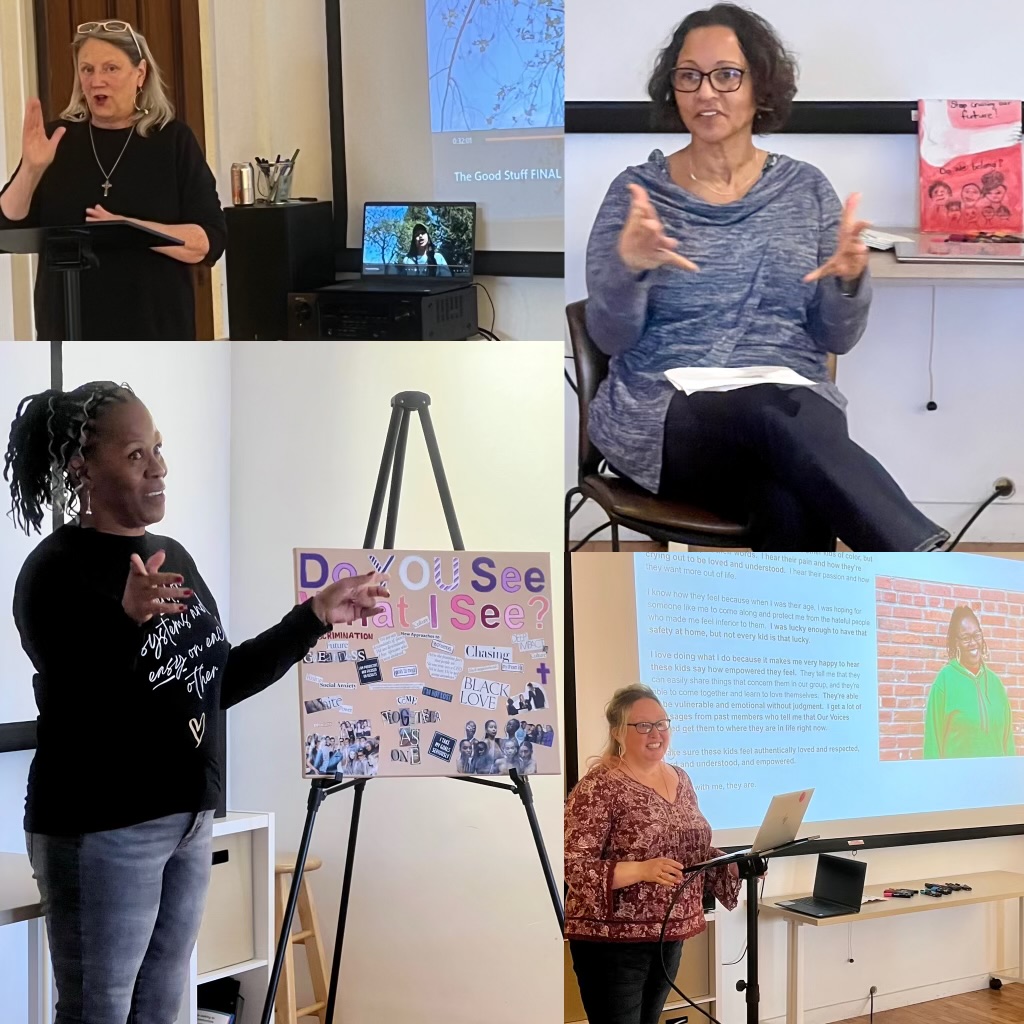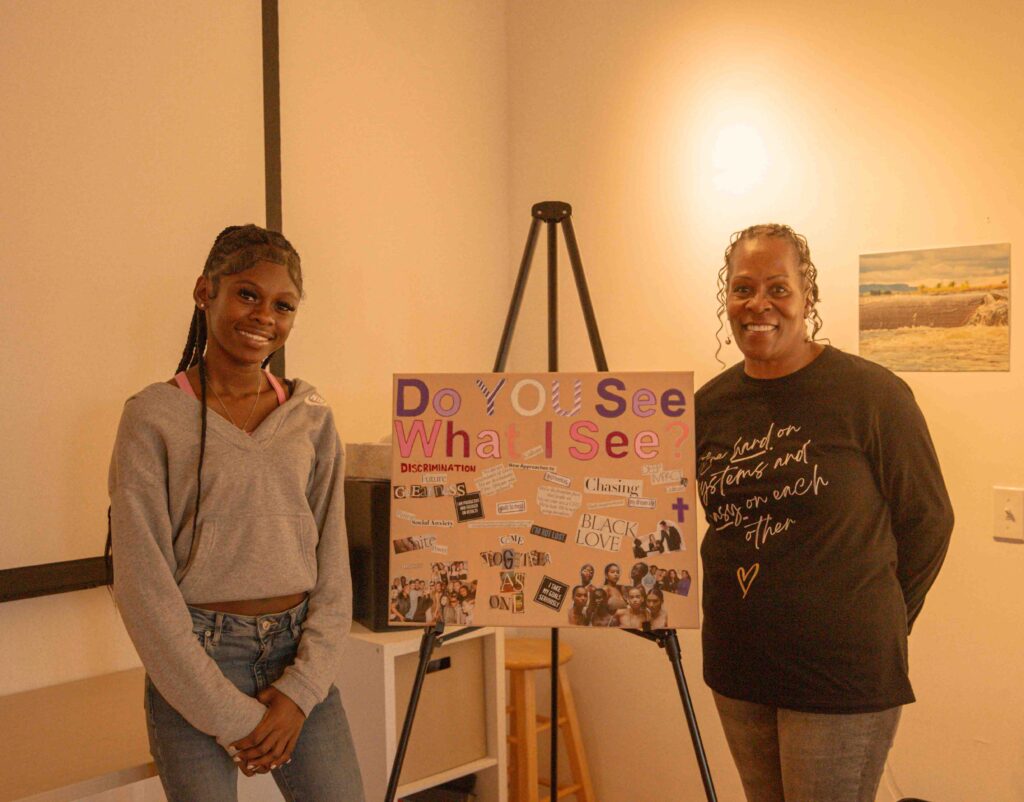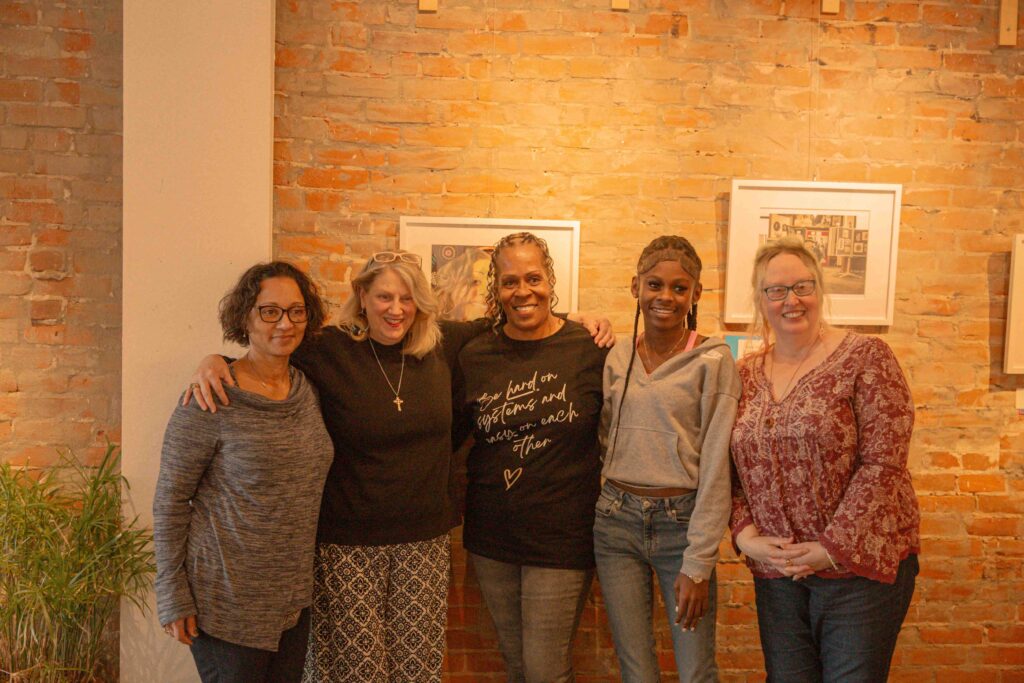
The Creative Community Leaders program emerged from a recurring conversation at Engage Winona. Graduates of Engage Winona’s Experience Leaders initiative—a nine-month community leadership development program that had run for three cohorts—consistently expressed the same need: “I love what I learned. I’m ready to go. I’m ready for funding to start getting that ball rolling on a small, manageable scale.” These emerging leaders weren’t seeking to quit their day jobs or pursue full-time activism, but they wanted resources to test community-focused ideas through creative approaches.
This feedback along with a SEMAC Organizational grant award led to the development of a nine-month program designed to bridge the gap between leadership training and ongoing community engagement. The CCL initiative provided participants with an $800 stipend, individual coaching, and group support to implement arts-based community projects that address local challenges and build connections across different groups.
The program operates on accessibility and broader definitions of creativity and leadership. Rather than requiring traditional artistic experience, the initiative recruits participants based on their connection to community issues and willingness to try creative approaches to address them. Sarah Johnson of The Joy Labs– a wonderful organization that combines art, mental health expertise, and community education to help individuals and communities build joy, resilience, and informal mental health support systems–served as facilitator, bringing her expertise in both mental health practice and community-engaged art to provide support for participants working on challenging community issues.
The coaching included individual sessions focused on project planning, community engagement strategy, and practical implementation guidance, plus group coaching that provided peer learning and collaborative problem-solving. The program culminated in a November 2024 public event at Engage Winona where participants shared their work with the broader community.
The 2024 pilot cohort included four projects that demonstrated the program’s range and impact. Joy Davis Ripley—a writer and artist whose lived experience with chronic health conditions deepens her understanding of resilience and community—developed Because, With Me, They Art: Arts, Community, & Healing, a project that examined resilience among women community leaders from diverse backgrounds. Davis Ripley conducted in-depth interviews with three women—identifying as Black, Hmong, and Colombian-American—who maintain community leadership roles despite facing significant personal challenges.
Kristine Hipps—a filmmaker inspired by the everyday heroes in her community—created The Good Stuff, a documentary that highlighted community members engaged in service. Hupp’s documentary used a combination of traditional interview methods and stop-motion animation using paper cutouts, creating content that celebrated ordinary people doing extraordinary work in their community. The film featured interviews with nine adults, six teens,d and five children, all nominated by neighbors as people who make Winona better through their daily actions.

At the Impact Center–a free after-school nonprofit youth center in Winona, MN serving K-12 students with homework help, activities, snacks, and optional Christian devotions focused on love, respect, and responsibility–, Ms. Kathy Sublett implemented Culture on Canvas, working with teenagers over eight weeks to create collages exploring community identity and engagement. Sublett, who described working with teens as outside her typical comfort zone, was motivated by concerns about how youth see themselves portrayed in media and her connection to her grandchildren of similar ages. Sublett drove to Rochester and the Twin Cities to source magazines featuring people of color, ensuring the creative materials reflected every participants’ identities. The project posed the question Do You See What I See? on each canvas, designed to challenge the broader community to understand different perspectives and experiences of local youth.
Maurella Cunningham of ROAR/Residents Organized Against Racism–a grassroots organization uniting to combat racism in our schools and communities by demanding action and accountability–created opportunities for community conversations about racial experiences and race relations in Winona. Cunningham organized two sessions at different venues—the Winona County Historical Society and Nate and Ally’s Frozen Treat Creations. The sessions brought together Black, White, and Multi-racial participants for dialogues about experiences with racism and collaborative responses to community challenges. Understanding that conversations about race can be difficult, Cunningham provided art supplies including paints, markers, pencils, sketch pads, and canvases as alternative forms of expression. The sessions generated immediate action as participants began brainstorming solutions to challenges that emerged in conversations. People shared community resources, made referrals for ongoing support needs, and exchanged contact information for continued collaboration.
The program’s impact extended across many levels of personal, organizational, and community development. At the personal level, the most significant change involved shifts in how participants saw themselves and their capacity to create change. The experience helped participants move from thinking “this is so beyond me” to “I am a person who can do this.” This shift in self-perception influenced participants’ ongoing community engagement, with several applying for additional funding to expand their community work using their CCL experience as a foundation.
The peer learning component created outcomes in collaborative problem-solving and support. Participants noted overlaps in their projects they hadn’t anticipated and supported each other through challenges. “Sarah Johnson helping scope my project so that it could actually be effective and important and do the work that I wanted to do” was a common theme in participant feedback, highlighting the crucial role of facilitation in the community leaders’ success.
Community-level impacts presented in ways that were both far-reaching and long-lasting. Months after projects concluded, people continued approaching participants to share how the work had affected them. Hupp reported that “several people tell me how much they enjoyed it, that it brought some of them to tears, and one friend who’d had a very rough day said the film made them feel so much better.”
Cunningham’s racial dialogue sessions created new awareness and connections that participants carried into other community spaces. “This project created an opportunity for people who didn’t know each other to get to know each other in a unique context,” she observed. “In the span of a short time, participants appeared to demonstrate care and concern for each other.”
For Engage Winona as an organization, facilitating the program prompted a new way to look at programming capacity and identity. “It prompted us to think of ourselves more in terms of people who do capacity building,” Isabel McNally, Engage Winona’s Program & Communications Manager reflects. “We expanded skillsets and connected with other organizations that can support community members individually and as people contributing to their community,” McNally notes. This shift required personal growth as well – “I had to get over myself as not an artist!” The program led to increased partnerships with local arts organizations and expanded the organization’s capacity to serve community members through creative programming.

Based on pilot year evaluation and participant feedback, the program has implemented modifications for its second iteration. Stipend amounts have increased to better support project scope and resource needs. Individual coaching hours have expanded to provide more intensive support for project development and execution. Technical assistance now includes training in grant writing and project reporting to address administrative challenges identified in the first year.
The Creative Community Leaders program illustrates that effective community development happens when residents are trusted to identify and address their own community’s needs through approaches that feel authentic to their experiences and skills. By providing resources, coaching, and support, the program has demonstrated the ripples that occur when people have opportunities to tell their stories, connect across differences, and take action on issues they care about.
Engage Winona’s second iteration of the SEMAC-funded Creative Community Leaders program is currently underway, with three participants working on new community projects that promise to be equally impactful. The cohort begins meeting in August 2025, and their projects will culminate in a public event in early 2025. To follow their progress and learn about future Creative Community Leaders opportunities, follow Engage Winona on Facebook and Instagram (@engagewinona), or sign up for their newsletter to stay informed about application periods and community events.